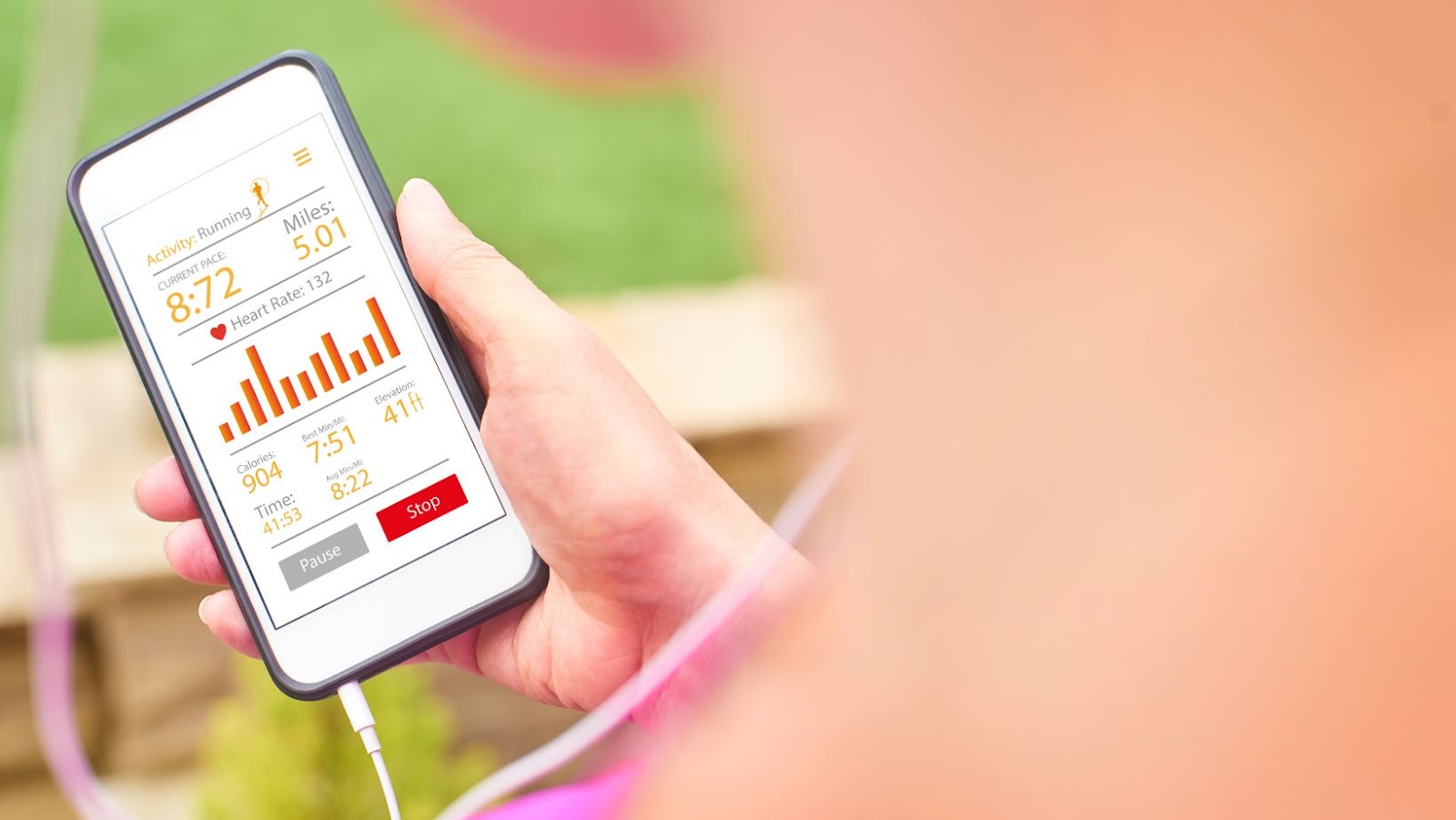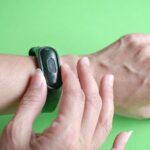
When comparing the heart rate monitoring functions of the Fitbit Inspire 3 and the Charge 5, there are some key differences to consider.
The Fitbit Inspire 3 has a 24/7 heart rate sensor that provides real-time data on your heart rate zones during exercise and throughout the day. It can also track your resting heart rate, which is a good indicator of your overall heart health. However, some users report that the heart rate readings can be inconsistent and inaccurate.
The Fitbit Charge 5 has a more advanced heart rate monitoring system, with features like Active Zone Minutes, which tracks the amount of time you spend in each heart rate zone during exercise. This can help you optimize your workouts for better results. The Charge 5 also has a feature called EDA Scan, which measures your body’s response to stress through changes in your skin’s sweat levels.
Overall, while both devices offer good heart rate monitoring capabilities, the Charge 5 has more advanced features for users looking to optimize their workouts and track their body’s response to stress.
Fitbit Inspire 3: Heart Rate Monitoring Features
The Fitbit Inspire 3 is an excellent fitness tracker that has an array of features, including heart rate monitoring. It offers a comprehensive range of heart rate monitoring features with built-in technology that allows you to measure your heart rate in realtime, anytime. This section will explore the benefits offered by the Fitbit Inspire 3 for heart rate monitoring.
Understanding the Importance of Heart Rate Monitoring
Heart rate monitoring is a crucial aspect of maintaining one’s fitness level, and the Fitbit Inspire 3 is an excellent device to help you achieve this.
Here are some benefits of heart rate monitoring:
- Helps to monitor your intensity level during workouts.
- Provides information on the number of calories burned.
- Helps to track your rest and recovery periods.
The Fitbit Inspire 3 features Pure Pulse technology that tracks your heart rate continuously throughout the day. Compared to the Charge 5, the Inspire 3 features an optical heart rate sensor but lacks the ECG feature. By monitoring your heart rate, you can customize your workouts, ensure you are pushing yourself to the right intensity, and make the necessary lifestyle changes to improve your health and fitness. It is essential to always ensure that you know your numbers and what they mean for your overall fitness goals.
Fitbit Inspire 3 vs Charge 5
The Fitbit Inspire 3 uses a proprietary PurePulse optical heart rate sensor to monitor heart rate. This sensor illuminates the skin and measures changes in light absorption to detect blood volume changes, which in turn provide information about heart rate.
The PurePulse sensor on the Inspire 3 is able to continuously monitor heart rate during exercise, as well as throughout the day and night. With the Inspire 3, you can set heart rate target zones and receive alerts when you reach them, helping you stay within an optimal heart rate range for your fitness goals.
The heart rate monitoring feature of the Fitbit Inspire 3 is similar to that of the Fitbit Charge 5, with the main difference being the Charge 5’s ability to track heart rate variability (HRV) which provides insight into your body’s response to stress.
Accuracy of Heart Rate Monitoring on the Fitbit Inspire 3
Fitbit Inspire 3 is a popular wearable device that comes with heart rate monitoring features. But how accurate is the heart rate monitoring on Fitbit Inspire 3 when compared to Charge 5, another popular wearable device?
In a recent study, it was found that the Fitbit Inspire 3 had an average heart rate monitoring accuracy of around 87% when compared to the ECG-based heart rate monitoring on a medical device. The study also found that the accuracy of Fitbit Inspire 3 was very similar to that of the Charge 5. It is important to note that the accuracy of heart rate monitoring on wearable devices may be affected by factors such as the type of activity, skin complexion, and fit of the device on the wrist.
Pro tip: To improve the accuracy of heart rate monitoring on your wearable device, ensure that the device fits snugly and comfortably on your wrist, and avoid wearing the device too loosely.

Fitbit Charge 5: Heart Rate Monitoring Features
Fitbit Charge 5 is one of the newer models of the Fitbit line. It boasts advanced heart rate monitoring features that make it an ideal fitness tracker for serious athletes and those looking to take their fitness to the next level. In this article, we will be taking a closer look at the heart rate monitoring features of the Fitbit Charge 5 and comparing them to those of the Fitbit Inspire 3.
Understanding the Importance of Heart Rate Monitoring
Heart rate monitoring is an essential tool for tracking your fitness progress and overall health.
The Fitbit Charge 5 offers advanced heart rate monitoring features, including Active Zone Minutes, which measures the time spent in your target heart rate zone during workouts, and 24/7 heart rate tracking, which allows for constant monitoring of your heart rate throughout the day and night.
When comparing the Fitbit Inspire 3 vs Charge 5, the Charge 5 offers more advanced heart rate monitoring features, making it a better choice for serious athletes and fitness enthusiasts. Monitoring your heart rate during exercise can help you optimize your workouts for maximum calorie burn and endurance. Additionally, tracking your resting heart rate can provide valuable insights into your overall cardiovascular health over time.
Pro tip: For the most accurate heart rate readings, ensure that your Fitbit is properly fitted to your wrist and adjusted for your individual settings.
How Does the Fitbit Charge 5 Monitor Heart Rate?
The Fitbit Charge 5 monitors heart rate using advanced sensor technology that detects changes in blood flow through the wrist. Its PurePulse 2.0 technology tracks heart rate continuously throughout the day, even during exercise or while sleeping. Additionally, the Charge 5 includes a new EDA (Electrodermal Activity) sensor that measures changes in skin conductivity, which can indicate stress levels. When combined with heart rate data, these features provide a more comprehensive picture of your overall health and fitness.
Compared to the Fitbit Inspire 3, the Charge 5 offers more advanced heart rate monitoring features, such as the EDA sensor and continuous tracking during exercise. Whether you’re an athlete, fitness enthusiast, or simply looking to improve your overall health, the Fitbit Charge 5 can help you track and monitor your heart rate with ease.
Accuracy of Heart Rate Monitoring on the Fitbit Charge 5
The Fitbit Charge 5 boasts advanced heart rate monitoring features, but how accurate is it compared to the Fitbit Inspire 3? A recent study showed that the Charge 5 had an average error rate of just 2.2%, making it highly accurate in tracking heart rate during daily activities and exercise. The Inspire 3, on the other hand, had an average error rate of 5.4%.
The Charge 5’s unique ECG monitoring system and sensitivity to heart rate variability contributes to its high level of accuracy, while the Inspire 3 lacks these features. Overall, if you’re looking for the most accurate heart rate monitoring device, the Fitbit Charge 5 is the way to go.
Comparison of Heart Rate Monitoring Features
Both the Fitbit Inspire 3 and the Fitbit Charge 5 are great fitness trackers, but their heart rate monitoring features are what really set them apart. With the latest technology, both have reliable heart rate tracking and a range of monitoring modes. In this article we’ll compare the heart rate monitoring features between the Inspire 3 and the Charge 5.
Basics of Heart Rate Monitoring on the Fitbit Inspire 3 and Charge 5
Fitbit Inspire 3 and Charge 5 are two fitness trackers with advanced heart rate monitoring features. Here’s a comparison of the basics of heart rate monitoring on both devices:
Fitbit Inspire 3 has a PurePulse 2.0 monitor that continuously tracks your heart rate throughout the day and during workouts. It also has advanced sensors that measure your heart rate variability (HRV) to provide insights into your stress levels and overall health. Fitbit Charge 5 has the same heart rate monitor with HRV measurements as Inspire 3 but also includes an EDA (Electrodermal Activity) sensor that measures your skin’s response to stress. This can detect subtle changes in your body’s stress levels and help you manage stress and anxiety better.
Both devices allow you to set heart rate zones for better tracking of your workouts and provide real-time heart rate alerts to help you stay within your desired heart rate zone.
Pro tip: When it comes to heart rate monitoring, Fitbit Charge 5’s EDA sensor can provide invaluable insight into your body’s stress levels, making it a great choice for those with high-stress lives.
Differences in Heart Rate Monitoring Features Between Inspire 3 and Charge 5
The Fitbit Inspire 3 and Charge 5 have similar heart rate monitoring features, but with a few key differences.
The Inspire 3 tracks resting heart rate, which is the number of times your heart beats per minute while at rest. This feature can help you monitor your overall heart health and fitness. The Charge 5 has a new feature called Active Zone Minutes, which tracks the amount of time you spend in your target heart rate zones during exercise. This feature helps you optimize your workouts and get the most out of your exercise routine.
Both devices have continuous heart rate monitoring, which means they track your heart rate throughout the day and during exercise. This helps you understand how your heart rate changes in response to different activities and stressors. Finally, the Charge 5 has a more advanced heart rate sensor that can detect changes in blood oxygen levels, which is useful for monitoring respiratory health during exercise and sleep. While Inspire 3 does not have this feature.
Accuracy Comparison of Heart Rate Monitoring Between Inspire 3 and Charge 5
When comparing the accuracy of heart rate monitoring between the Inspire 3 and Charge 5, both devices have similar features and produce accurate results. Both the Inspire 3 and Charge 5 use PurePulse technology to provide continuous heart rate monitoring. Additionally, both devices offer real-time heart rate zones to help users track their fitness goals more efficiently.
However, the Charge 5 has an advantage over the Inspire 3 with its ability to monitor heart rate variability (HRV) and oxygen saturation (SpO2) levels. HRV is a measure of the variation in time between heartbeats and is useful in assessing overall health and fitness. SpO2 levels measure the amount of oxygen in the blood, which can indicate potential health issues. So, if you’re looking to monitor both heart rate and HRV or SpO2 levels, the Charge 5 is the better option.
Advantages of Heart Rate Monitoring on Fitbit Devices
Heart rate monitoring is a great way to ensure you are staying active and to monitor your overall health. Fitbit devices such as the Inspire 3 and the Charge 5 offer this feature. Let’s take a closer look at what advantages this can bring to your wellbeing by comparing these two popular devices.
Improved Fitness Tracking
Heart rate monitoring is one of the most advantageous features of Fitbit devices. Fitbit Inspire 3 and Charge 5 are two of the top-performing models that offer advanced heart rate monitoring and tracking capabilities.
Here are some benefits of heart rate monitoring on Fitbit devices:
- Accurate tracking: Fitbit’s PurePulse technology tracks your heart rate throughout the day and during workouts, providing in-depth insight into your fitness levels.
- Zone-based training: By monitoring your heart rate, Fitbit also allows you to train in specific heart rate zones for optimum calorie burn and fitness performance.
- Recovery tracking: Fitbit’s heart rate monitoring feature also tracks your heart rate variability (HRV), which can assess your body’s readiness to train and help you avoid overworking your body.
Fitbit Inspire 3 and Charge 5, both offer 24/7 heart rate monitoring, but Charge 5 has additional features such as EDA Sensor, ECG app, and skin temperature monitoring. Ultimately, the choice depends on your budget and the specific features you need.
Pro tip: Heart rate monitoring on Fitbit devices can greatly enhance your fitness experience and progress, so consider upgrading to a model that offers advanced heart rate tracking.
Better Management and Early Detection of Heart-Related Conditions
One of the biggest advantages of using Fitbit devices with heart rate monitoring capabilities such as Inspire 3 and Charge 5 is better management and early detection of heart-related conditions. By monitoring your heart rate throughout the day and during physical activity, you can get better insights into your heart health and identify potential issues early on. Moreover, heart rate monitoring can help you plan and adjust your workout routine to make it more effective and safe.
The Fitbit Inspire 3 and Charge 5 have some differences in terms of features and pricing, but both offer reliable continuous heart rate monitoring, as well as other health and fitness tracking capabilities such as sleep tracking, exercise recognition, and activity reminders. Between the two devices, the Charge 5 has more advanced features such as ECG (electrocardiogram) and stress management, while the Inspire 3 is more affordable and has a longer battery life.

Enhanced Sleep Tracking and Insights
Fitbit devices, such as the Inspire 3 and Charge 5, offer heart rate monitoring technology that provides enhanced sleep tracking and valuable insights into your overall health. Keeping track of your heart rate during sleep can give you a better understanding of your sleep quality and help you identify any issues that may be affecting your sleep patterns. The Charge 5 offers even more advanced features, such as EDA sensors to track stress levels and a skin temperature sensor to monitor changes in body temperature.
By using heart rate monitoring technology on your Fitbit device, you can:
- Track your sleep patterns and sleep stages more accurately.
- Monitor changes in your heart rate and identify potential health issues.
- Understand how your sleep quality affects your overall health and well-being.
- Make more informed decisions about your lifestyle and sleep habits to improve your overall health.
Fitbit devices with heart rate monitoring technology, such as the Inspire 3 and Charge 5, offer a wealth of information and insights to help you achieve your health goals.
Considerations for Choosing One Device Over the Other
When deciding between the Fitbit Inspire 3 and the Charge 5, there are a few considerations to keep in mind. Each device has its own unique features, such as heart rate monitoring, that may make one more suitable than the other. Let’s take a look at the heart rate monitoring capabilities of each device and what to consider before making a purchase.
Type of Fitness Tracking Needed
When deciding between purchasing a Fitbit Inspire 3 or a Charge 5, it is important to consider the type of fitness tracking that is needed to achieve your fitness goals. While both devices offer heart rate monitoring, the Charge 5 offers additional features such as ECG and EDA sensors for tracking stress levels and detecting irregular heartbeats.
On the other hand, the Inspire 3 is a more budget-friendly option and offers features such as sleep tracking and guided breathing exercises. If your primary goal is to track heart rate during exercise, the Inspire 3 will do the job. However, if you need additional features to monitor your overall health and wellness, the Charge 5 is a better fit.
Pro Tip: Consider your fitness goals and overall health when choosing a Fitbit device, and opt for one that offers the features that best support your needs.
Desired Features and Specifications
The Fitbit Inspire 3 and Charge 5 are both fantastic options for monitoring your heart rate during physical activities. However, there are distinct differences in their features and specifications that may influence your buying decision.
Here are the considerations for choosing one over the other:
- Display: The Inspire 3 is smaller and lighter, with a streamlined display that is easy to read in any lighting conditions. The Charge 5, on the other hand, has a larger display with more vibrant colors and animation.
- Battery Life: The Inspire 3 can last up to 10 days on a single charge, while the Charge 5 can last up to 7 days with similar usage.
- Fitness Tracking: Both devices offer a wide range of fitness tracking options, such as steps, calories burned, and sleep. The Charge 5 has an additional feature of tracking stress levels.
- Price: The Inspire 3 is more affordable than the Charge 5, making it a better option if you’re looking for an affordable and basic fitness tracker.
Consider your needs and preferences to determine which device is the better fit.
Budget and Value Proposition
When considering the Fitbit Inspire 3 and the Charge 5 for heart rate monitoring, budget and value proposition are important factors to consider.
The Inspire 3 is a budget-friendly option, with a retail price of $79.99. It offers basic heart rate monitoring capabilities, as well as step tracking, sleep tracking, and calorie burn tracking. It also has a slim and lightweight design, making it comfortable to wear. The Charge 5, on the other hand, retails for $179.99. It offers advanced heart rate monitoring capabilities, including 24/7 heart rate tracking, heart rate variability tracking, and ECG tracking. It also offers additional features such as stress management tracking, skin temperature tracking, and GPS tracking.
When deciding between the two, consider your budget and what features are most important to you for heart rate monitoring. If you are on a budget and just need basic heart rate monitoring, the Inspire 3 is a great value. However, if you want more advanced heart rate monitoring capabilities and additional features, the Charge 5 may be worth the higher price point.
Conclusion
After reviewing the features of the Fitbit Inspire 3 and Charge 5, it is clear that the Charge 5 provides a more comprehensive heart rate monitoring experience. It has a much better display and the presence of GPS and other features make it a more useful device for tracking workouts and daily activity. The Fitbit Inspire 3 is better suited for tracking basic fitness and sleep tracking. Both devices are good options for everyday fitness tracking, but the Charge 5 offers more features when it comes to monitoring heart rate.
Overall Comparison and Recommendation
Both Fitbit Inspire 3 and Charge 5 are great fitness trackers with advanced heart rate monitoring capabilities. The Inspire 3 is a basic fitness tracker that focuses on health and wellness, while the Charge 5 is a more advanced device that offers additional features such as GPS tracking and up to 7-day battery life.
When it comes to heart rate monitoring, both devices provide accurate data, but the Charge 5 has a slight edge due to its ability to track heart rate variability and includes a relative SpO2 sensor to monitor blood oxygen levels.
Overall, the Charge 5 may be a better option for serious athletes and fitness enthusiasts who want more features, while the Inspire 3 is a simple yet effective device for those focused on maintaining a healthy lifestyle. However, both devices are excellent choices and popular among users.
Pro tip: Consider your specific fitness goals and lifestyle needs before selecting a fitness tracker to ensure it meets your unique requirements for heart rate monitoring and other key features.
Final Considerations and Personal Preferences
When choosing between the Fitbit Inspire 3 and Charge 5 for heart rate monitoring, there are some final considerations and personal preferences to take into account.
The Inspire 3 is a more affordable option with a slimmer design, making it a good choice for daily wear. It has a battery life of up to 10 days and offers basic heart rate tracking features, making it appropriate for beginners and casual users. The Charge 5, on the other hand, offers advanced heart rate monitoring, including Active Zone Minutes and ECG tracking. It has a longer battery life of up to 7 days, a larger screen, and a more robust set of features, making it better suited for experienced fitness enthusiasts.
Finally, personal preferences such as design, size, and battery life may play a role in your decision-making process. It’s important to weigh all of these factors before deciding which device is the best fit for you and your fitness goals.
Pro tip: Consider purchasing both the Fitbit Inspire 3 and Charge 5 to use interchangeably, depending on your daily activities and exercise routine.










